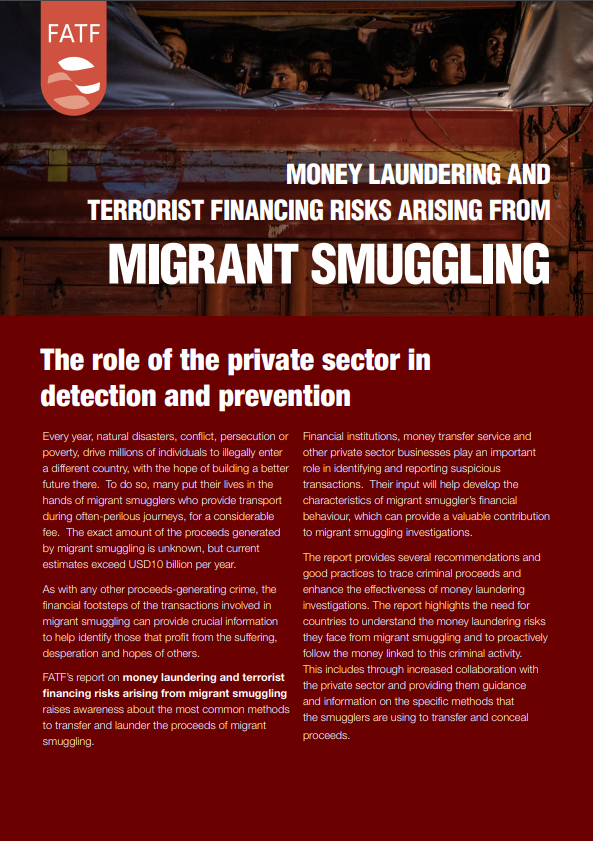Migrant smuggling
As a result of various migration crises, migrant smuggling has become one of the crimes of which the profitability has increased the most in recent years. This usually involves smugglers who organise people smuggling in exchange for considerable amounts of money.
People smuggling networks can be fairly simple (with a limited number of parties involved) but can also be very complex (so complex and organised that they can be viewed as genuine criminal organisations). Depending on the networks’ level of complexity different money laundering methods are used to inject, move or invest money into the legitimate economy.
The transactions identified in the files that CTIF-CFI has disseminated to the judicial authorities are generally money remittance transactions, often from and to regions known as locations on migration routes that migrants use to reach Western Europe.
In other cases we find that legitimate companies are used, which are managed by smugglers or their associates (such as retailers and wholesalers, food shops, travel agencies, transport companies, internet access points or night shops) and are used throughout the journey to support the facilitation activities of the networks, in particular by providing logistical support. They can also be used to launder the proceeds of crime and to make their income appear legitimate. These files show that commercial activities are often used for illegal activities related to illegal migration networks. Although the nature of the commercial activities carried out by these companies could explain the cash deposits, it is probable that, given the police information, the transactions are at least partly the proceeds of migrant smuggling.
The generated profits are invested in real estate, high-value goods and legitimate companies, both in the countries of origin and in the countries of destination[1].
Criminal networks are able to thrive because of the large demand for the services provided by smugglers and the low risk of detection. Migrant smuggling is an issue of international concern. As part of its work on trends, the FATF has conducted a typological study[2] into this topic and CTIF-CFI contributed to this study. Its results intend to provide an international insight into this issue, provide typologies on the methods used and raise awareness within the private sector[3].
Detecting financial flows derived from migrant smuggling remains difficult. The frequent use of cash, the avoidance of the formal banking sector and the use of unofficial methods outside of the banking system such as hawala are obstacles. According to the FATF report there are other difficulties such as the use of cryptoassets and professional money laundering networks.
Finally, as emphasised by Europol[4], one of the main changes to the methods used by smugglers is the use of digital services and tools, such as social media and mobile applications for recruitment, (encrypted) communications, the sharing of photos and videos of (fake) documents as well as for money remittance.
[1] Europol (2021), European Migrant Smuggling Centre – 5th Annual Report, Publications Office of the European Union, Luxembourg
[2] FATF, ML/TF Risks Arising from Migrant Smuggling, 2022
[4] Europol (2021), European Migrant Smuggling Centre – 5th Annual Report, Publications Office of the European Union, Luxembourg



